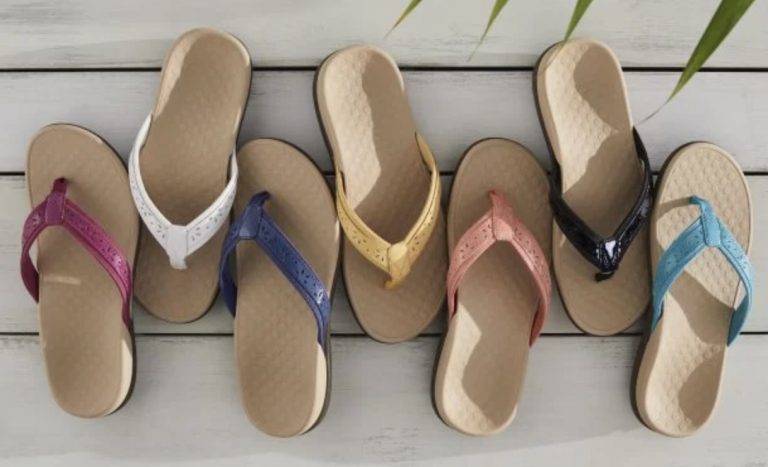When you buy footwear, what do you look for? Do you look for fashionable shoes? Or do you pay attention to the health benefits as well? In the past several years, orthotic shoes have made their way to the mainstream. Gone are the days when only nurses and doctors used orthotic shoes. Nowadays, we all want to find the best orthotic shoes.
So, where can you find them? And what does classify shoes as good orthotic shoes? Well, we try to explain all of your questions.
Why do you need orthotic shoes?
Let’s start at the beginning. And that is why and who should buy orthotic shoes? Well, nowadays, probably everyone could benefit from wearing orthotic footwear. Do you find it hard to walk, run, or perform physical activities? Do you have structural defects in your feet?
Orthotic shoes are over-the-counter and custom-made products that provide sturdy feet support. They help you keep a well-balanced posture. Some 20 years ago, nurses and medical people wore them. And you could easily notice them. But nowadays, orthotic footwear comes in different shapes, sizes, and styles.
Now, the challenge is finding the perfect shoes for you. Let’s take a look at our guide for how to find the best orthotic shoes?
Types of orthotic shoes
We can start with the types of orthotics. When you want to know how to buy orthotic shoes, you have to start with the type of shoes you need. You can head head over to Lucky Feet Shoes Upland to browse for your needs.
We recommend consulting with a foot specialist first. They can make a 3D model of your shoe after creating a cast of your foot. The 3D model shows the exact shape and size of your foot and captures structural issues that you need to address.
We can classify orthotic footwear into two major categories, accommodative and functional. The latter provide ample structural support for many foot abnormalities, including pronation. Most of the time, functional orthotics come in plastic polymer, working perfectly for flat-footed individuals.
On the other hand, accommodative orthotics correct simple foot problems and relieve mild pain. Some examples include gait plates, night bars, and splints.
You can also try and classify orthotic footwear in three other categories. The first one is off-the-shelf, shoes that do not come custom-made for your feet. They provide the basic level of support, a bit more than your garden shoes.
Customized soft orthotics provide enough cushioning support that minimizes injuries. Made of soft materials, including foam or silicone, we use them for patients that suffer from arthritis or structural deformity.
Last, we have customized hard orthotics, shoes that we use to limit the movements of the foot joints. They can be two thirds, with an added soft cover to full length
How to choose the right model?
If you want to buy orthotic shoes, you have to start with your feet. Understand your arch. What kind of foot you have? What kind of arch you have?
You can find out by performing a simple test at home. We call it the wet foot test. Or the paper test. All you have to do is open a brown paper bag or lay down some newspaper on the floor. Take the paper to the floor, and then remove your shoes and socks. Lightly wet the bottoms of your feet. Walk across the paper.
This will give you a wet footprint. Compare it to an orthotic diagram and see if you have a low, medium, or high arch.
Based on the type of your arch, you can look for the right type of shoes for your foot. And this is important because wearing the wrong shoe for your arch type can result in many problems.
For example, if you have a high arch and you spend more time on the outside of your foot during running. Getting the wrong shoe might over-correct yourself and you will end up with a new injury.
If you have a low arch foot, and you have a lot of mobility in your feet, you can absorb shock easier. This makes your foot adaptable to changing direction, and your shoes should follow that.
The Orthotic Shop offers a wide range of female and male shoes. For example, you can choose between athletic footwear, boots, casual and dress shoes, professional shoes, clogs, sandals, slippers, walking shoes, and even work shoes. The shop also offers wide shoes, extra wide shoes, and narrow shoes.
Pay attention to features
When you search for the best orthotic shoes, you want to make sure they deliver the best quality. And you want shoes that have features that will make your life easier. Here are some features you need to pay attention to.
- Rigid heel counter that will keep your ankles in the right position
- Minimal torsion and twist, or shoes that do not twist easily
- Firm density midsole
- Wider foot support, helping you walk with ease
- Wide toe box, allowing you enough space for your foot
- Low heels, providing comfort while walking
- Sufficient shoe depth that can prevent shoes from slipping off


0 Comments